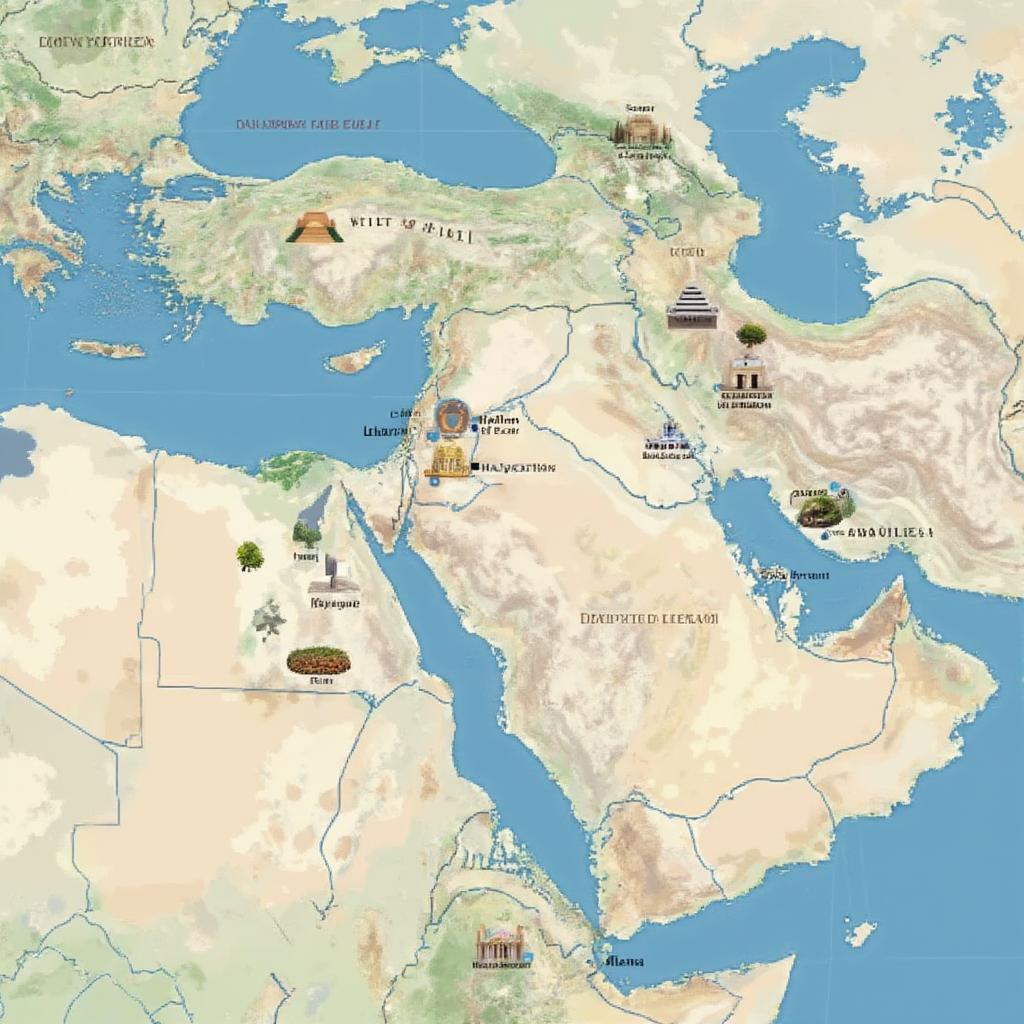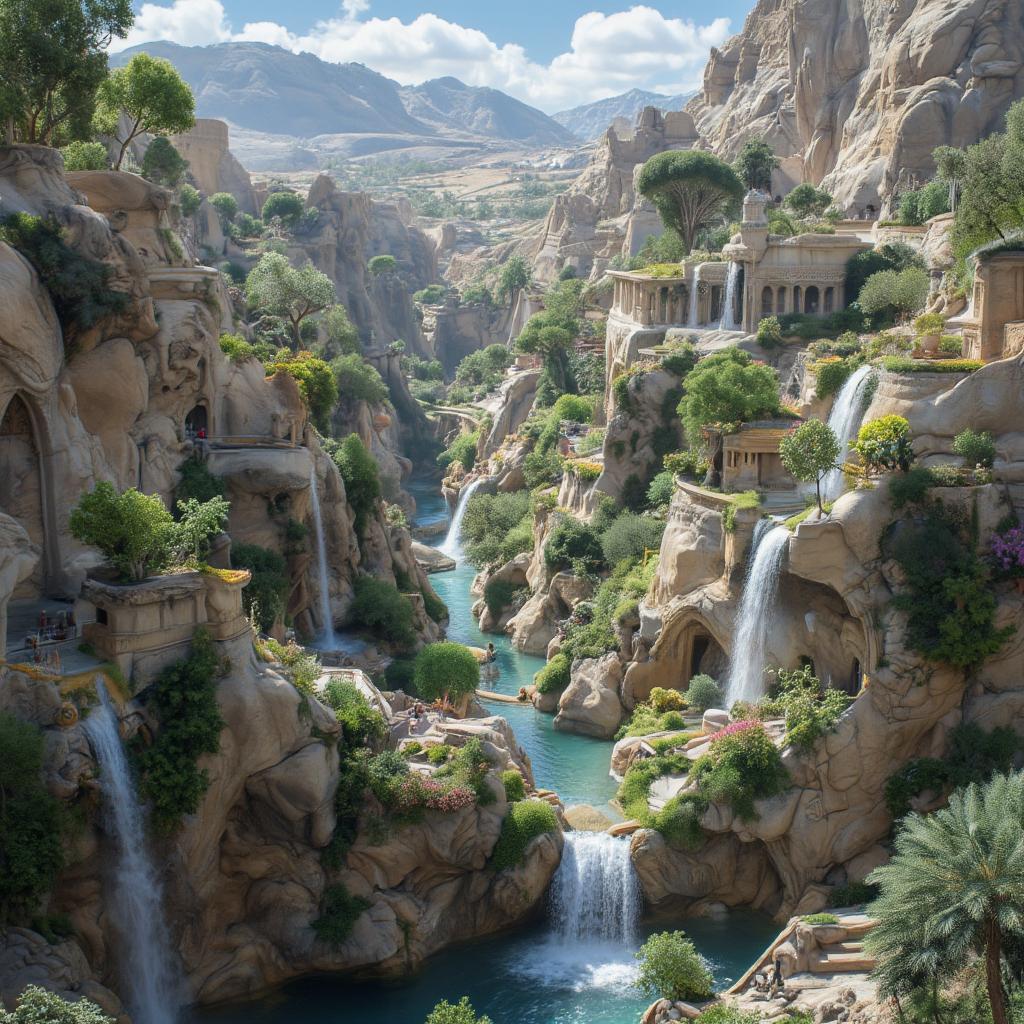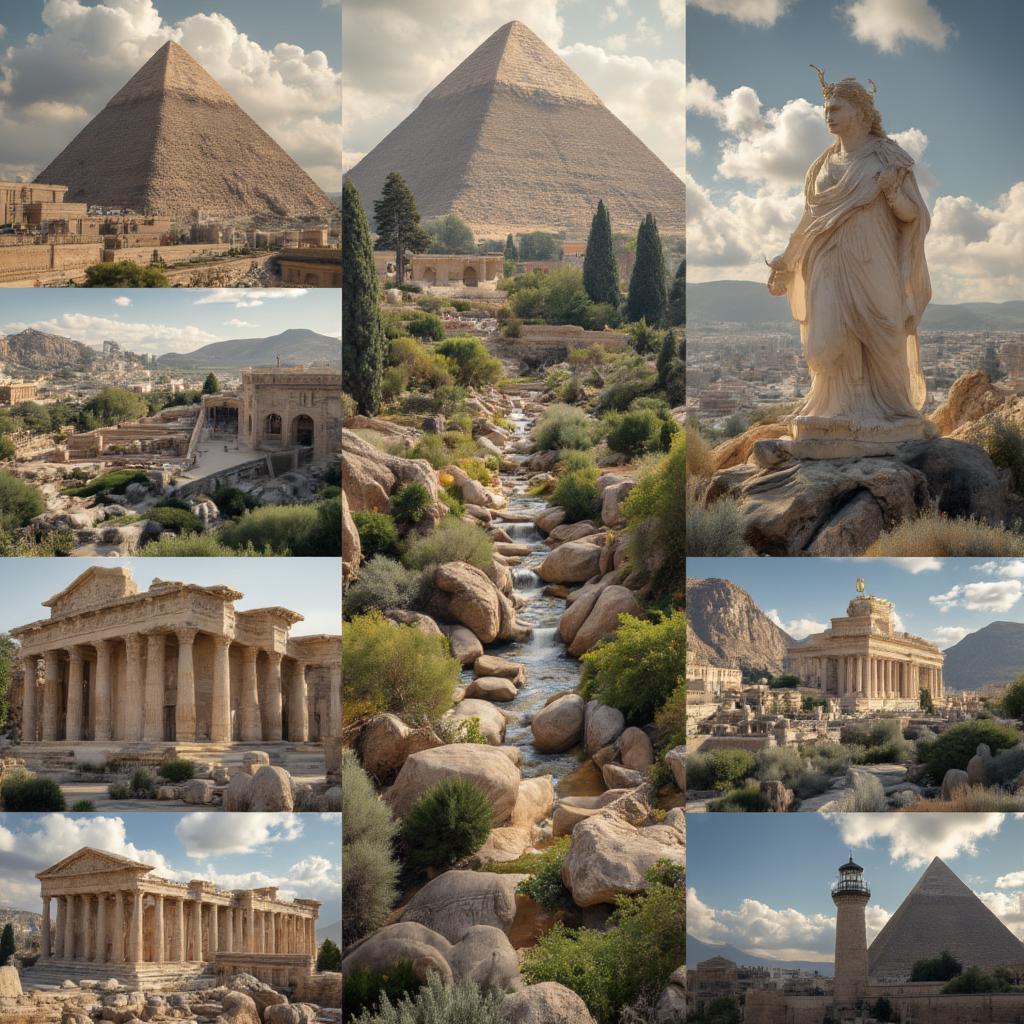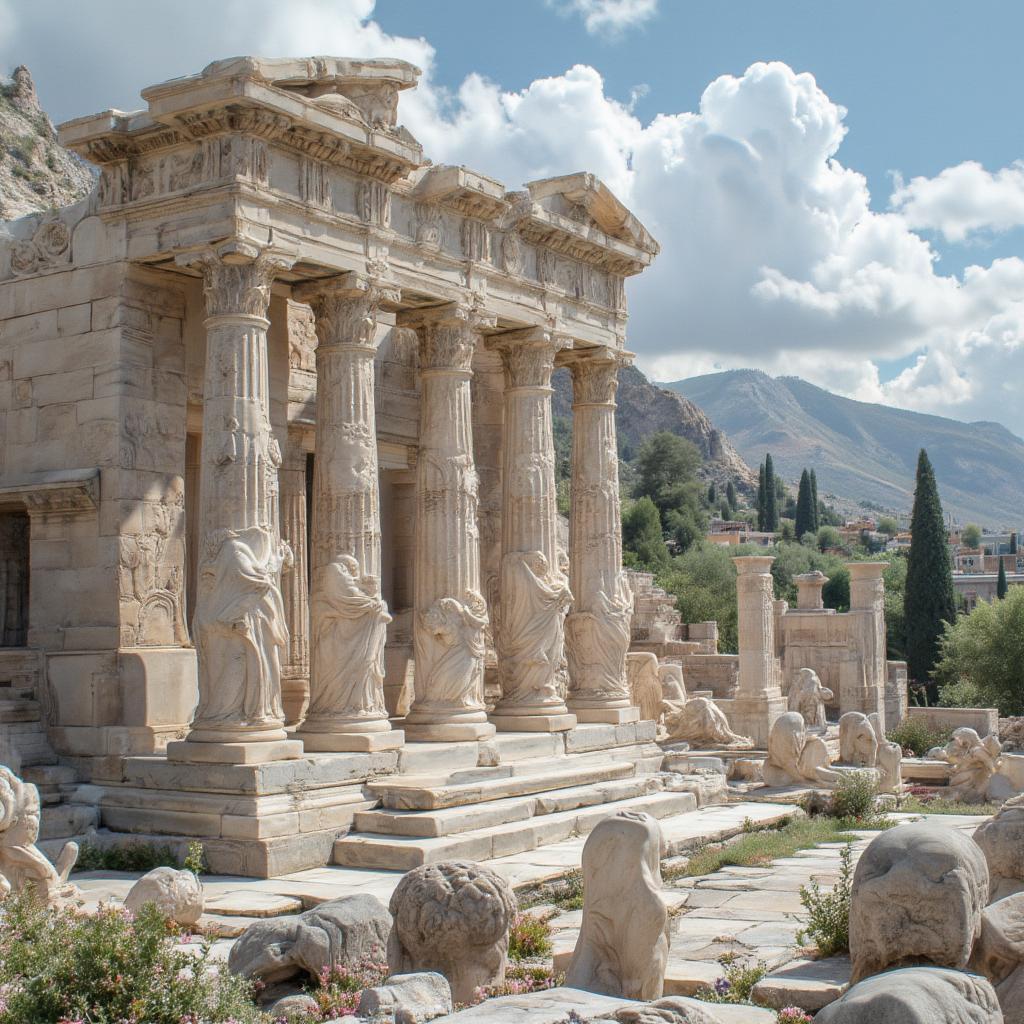Unveiling the 7 Wonders of the Ancient World: A Journey Through Time

The 7 wonders of the ancient world, a list compiled by ancient Greek historians and writers, encapsulates the most awe-inspiring and ambitious architectural and artistic feats of antiquity. These magnificent structures, scattered across the Mediterranean and the Middle East, served as testaments to human ingenuity, power, and cultural achievements. They continue to fascinate us today, prompting us to delve into their stories, their purposes, and their ultimate fates.
Why Were the 7 Wonders of the Ancient World Chosen?
The selection of these specific sites wasn’t random; it reflected the criteria of the time, focusing on the monumental, the beautiful, and the technologically advanced. The ancient Greeks, known for their love of spectacle and precision, sought to highlight those structures that stood out due to their sheer size, intricate designs, or the artistic genius involved in their creation. What exactly made these wonders so special? It was the fusion of scale, artistry, and the advanced technology of the era that distinguished these sites from their contemporaries.
What Were the Criteria for Inclusion?
The criteria for inclusion varied somewhat across different lists compiled by historians like Herodotus, Callimachus of Cyrene, and Antipater of Sidon. However, common threads emerge:
- Monumental Scale: The structures had to be of exceptional size and impressiveness.
- Artistic Mastery: They needed to exhibit a high level of craftsmanship and artistic skill.
- Technological Innovation: The wonders often showcased the most advanced engineering and construction techniques of their time.
- Cultural Significance: Each wonder reflected the values, beliefs, and power of the civilization that created it.

Exploring the 7 Wonders
Let’s journey through the sands of time and examine each of these iconic structures in more detail.
The Great Pyramid of Giza (Egypt)
The only remaining wonder of the ancient world, the Great Pyramid of Giza, is a marvel of ancient engineering and a testament to the power of the pharaohs. Built during the Fourth Dynasty for Pharaoh Khufu, it served as a tomb and a symbol of his absolute authority. Its sheer size and precise alignment continue to astound engineers and historians alike.
- Construction: Made of millions of precisely cut stone blocks, its construction was a logistical feat employing a vast workforce of skilled laborers.
- Purpose: It served as the final resting place for Pharaoh Khufu and as a symbol of his divine status.
- Significance: It is a testament to ancient Egyptian architectural and engineering expertise, standing as an enduring symbol of their civilization.
“The Great Pyramid of Giza stands as a potent reminder of the ingenuity and ambition of the ancient Egyptians. It’s not just a tomb; it’s a symbol of their belief in the afterlife and their mastery of monumental architecture,” comments Dr. Eleanor Vance, an expert in ancient Egyptian history.
The Hanging Gardens of Babylon (Mesopotamia)
Legend says the Hanging Gardens of Babylon were a gift from King Nebuchadnezzar II to his homesick wife, Amytis of Media. These fabled gardens were described as an artificial mountain of layered terraces lush with vegetation. Their existence is still debated among historians, with little archaeological evidence supporting their existence, but their legend endures as a testament to royal extravagance and horticultural artistry.
- Legend: Believed to be a tiered structure with elaborate irrigation systems to sustain lush flora.
- Purpose: A gift to a queen, a symbol of royal power, and an oasis in the arid landscape.
- Mystery: The lack of archaeological evidence fuels ongoing debate about its actual existence and form.

The Statue of Zeus at Olympia (Greece)
Created by the renowned sculptor Phidias, the Statue of Zeus at Olympia was a massive, 40-foot tall chryselephantine (made of gold and ivory) sculpture housed within the Temple of Zeus. It was a revered depiction of the king of the gods and was considered an unparalleled achievement in ancient Greek sculpture.
- Sculpture: A magnificent chryselephantine statue, showcasing Zeus seated on a throne and holding a scepter and a figure of Nike, the goddess of victory.
- Purpose: A religious icon, worshipped and honored within the Temple of Zeus.
- Decline: Sadly, the statue was lost to fire in the 5th century AD.
The Temple of Artemis at Ephesus (Turkey)
Dedicated to the Greek goddess Artemis, the Temple of Artemis at Ephesus was renowned for its massive scale and exquisite beauty. It was rebuilt several times after destructions, each time more impressive. This temple served as a significant religious center and a commercial hub for Ephesus.
- Reconstructions: Rebuilt multiple times, with each version grander than the last.
- Significance: A major religious center and hub for commerce.
- Materials: Constructed primarily of marble, with ornate sculptures and detailing.
The Mausoleum at Halicarnassus (Turkey)
The Mausoleum at Halicarnassus was a lavish tomb built for Mausolus, a satrap in the Persian Empire. This impressive structure, with its blend of Greek, Egyptian, and Lycian architectural styles, gave its name to all grand tombs that followed: mausoleum. It was famed for its impressive scale, intricate sculptures, and innovative design.
- Architecture: Combined Greek, Egyptian, and Lycian styles, influencing later tomb architecture.
- Purpose: A monumental tomb built for Mausolus and his family.
- Significance: A symbol of wealth and power, giving its name to elaborate tombs.
“The Mausoleum at Halicarnassus was a symbol of the fusion of cultures and architectural brilliance. It set a precedent for later monumental tombs, forever changing our perception of what a tomb could be,” notes Professor Alistair Finch, a specialist in ancient architecture.
The Colossus of Rhodes (Greece)
The Colossus of Rhodes was a colossal bronze statue of the Greek sun god Helios, erected in the harbor of Rhodes. It was celebrated for its sheer size and the engineering prowess needed to create it. This statue, though short-lived, became an emblem of the island’s power and prosperity.
- Construction: Made of bronze and supported by a stone base, standing approximately 108 feet tall.
- Location: Standing in the harbor entrance, a welcoming beacon for all sailors.
- Fate: Collapsed during an earthquake, its remains were scattered and recycled.
The Lighthouse of Alexandria (Egypt)
The Lighthouse of Alexandria was one of the tallest structures built by humans in ancient times. It was erected on the island of Pharos in Alexandria, guiding ships into the busy harbor. Its innovative design and height made it a marvel of engineering and a crucial aid to maritime navigation.
- Design: A tall, tiered tower with a complex system of mirrors reflecting sunlight and a fire at night.
- Purpose: A vital navigation aid, guiding ships into the harbor of Alexandria.
- Longevity: Remained standing for centuries until destroyed by earthquakes.
The Legacy of the 7 Wonders
The 7 wonders of the ancient world continue to inspire and intrigue us. They are not just relics of the past; they are testaments to human ambition, creativity, and resilience. From the engineering marvel of the Great Pyramid to the artistic beauty of the Statue of Zeus, these wonders showcase the diverse achievements of the ancient world. These structures may have crumbled, but their stories continue to resonate, reminding us of the magnificent potential of human achievement.
“The 7 Wonders of the Ancient World are more than just ancient structures; they are a mirror reflecting our collective history. Each one tells a unique story, prompting us to marvel at the achievements of those who came before us,” shares Dr. Isabella Cortez, a cultural historian with a focus on the impact of ancient wonders.
What Can We Learn From the 7 Wonders?
Studying the 7 wonders of the ancient world allows us to:
- Appreciate the architectural and engineering skills of ancient civilizations.
- Understand the cultural and religious significance of these structures.
- Recognize the enduring legacy of human creativity and innovation.
- Reflect on the passage of time and the fragility of human creations.

In conclusion, the 7 wonders of the ancient world represent some of the most extraordinary feats of human endeavor. They not only illustrate the power and grandeur of ancient societies but also offer us valuable insights into their cultures, technologies, and beliefs. Exploring these marvels provides a captivating journey through time, encouraging us to cherish the legacy of the past and consider the potential of the future. So, why not embark on your own journey to discover more about these incredible structures and the world that created them?




